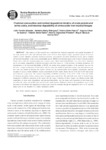Use este identificador para citar ou linkar para este item:
http://www.alice.cnptia.embrapa.br/alice/handle/doc/934544Registro completo de metadados
| Campo DC | Valor | Idioma |
|---|---|---|
| dc.contributor.author | MIRANDA, L. F. | pt_BR |
| dc.contributor.author | RODRIGUEZ, N. M. | pt_BR |
| dc.contributor.author | PEREIRA, E. S. | pt_BR |
| dc.contributor.author | QUEIROZ, A. C. de | pt_BR |
| dc.contributor.author | SAINZ, R. D. | pt_BR |
| dc.contributor.author | PIMENTEL, P. G. | pt_BR |
| dc.contributor.author | GONTIJO NETO, M. M. | pt_BR |
| dc.date.accessioned | 2012-09-25T11:11:11Z | pt_BR |
| dc.date.available | 2012-09-25T11:11:11Z | pt_BR |
| dc.date.created | 2012-09-25 | pt_BR |
| dc.date.issued | 2012 | pt_BR |
| dc.identifier.citation | Revista Brasileira de Zootecnia, Viçosa, MG, v. 41, n. 3, p. 717-725, 2012. | pt_BR |
| dc.identifier.uri | http://www.alice.cnptia.embrapa.br/alice/handle/doc/934544 | pt_BR |
| dc.description | The objective of this research was to determine the chemical composition and ruminal degradation of the crude protein (CP), total and individual amino acids of leaves from tropical forages: perennial soybean (Neonotonia wightii), cassava (Manihot esculenta), leucaena (Leucaena leucocephala) and ramie (Boehmeria nivea), and to estimate the intestinal digestibility of the rumen undegradable protein (RUDP) and individual amino acids of leaves from the tropical forages above cited, but including pigeon pea (Cajanus cajan). Three nonlactating Holstein cows were used to determine the in situ ruminal degradability of protein and amino acids from leaves (6, 18 and 48 hours of ruminal incubation). For determination of the intestinal digestibility of RUDP, the residue from ruminal incubation of the materials was used for 18 hours. A larger concentration of total amino acids for ramie and smaller for perennial soybean were observed; however, they were very similar in leucaena and cassava. Leucine was the essential amino acid of greater concentration, with the exception of cassava, which exhibited a leucine concentration 40.45% smaller. Ramie showed 14.35 and 22.31% more lysine and methionine, respectively. The intestinal digestibility of RUDP varied from 23.56; 47.87; 23.48; 25.69 and 10.86% for leucaena, perennial soybean, cassava, ramie and pigeon pea, respectively. The individual amino acids of tropical forage disappeared in different extensions in the rumen. For the correct evaluation of those forages, one should consider their composition of amino acids, degradations and intestinal digestibility, once the amino acid composition of the forage does not reflect the amino acid profiles that arrived in the small intestine. Differences between the degradation curves of CP and amino acids indicate that degradation of amino acids cannot be estimated through the degradation curve of CP, and that amino acids are not degraded in a similar degradation profile. | pt_BR |
| dc.language.iso | eng | eng |
| dc.rights | openAccess | eng |
| dc.subject | Digestão intestinal | pt_BR |
| dc.title | Chemical composition and ruminal degradation kinetics of crude protein and amino acids, and intestinal digestibility of amino acids from tropical forages. | pt_BR |
| dc.type | Artigo de periódico | pt_BR |
| dc.date.updated | 2017-09-28T11:11:11Z | pt_BR |
| dc.subject.thesagro | Aminoácido | pt_BR |
| dc.subject.thesagro | Digestibilidade | pt_BR |
| dc.subject.thesagro | Forragem | pt_BR |
| dc.subject.thesagro | Proteína | pt_BR |
| riaa.ainfo.id | 934544 | pt_BR |
| riaa.ainfo.lastupdate | 2017-09-28 -03:00:00 | pt_BR |
| dc.identifier.doi | 10.1590/S1516-35982012000300035 | pt_BR |
| dc.contributor.institution | MIGUEL MARQUES GONTIJO NETO, CNPMS. | pt_BR |
| Aparece nas coleções: | Artigo em periódico indexado (CNPMS)  | |
Arquivos associados a este item:
| Arquivo | Descrição | Tamanho | Formato | |
|---|---|---|---|---|
| Chemicalcomposition.pdf | 54,64 kB | Adobe PDF |  Visualizar/Abrir |









